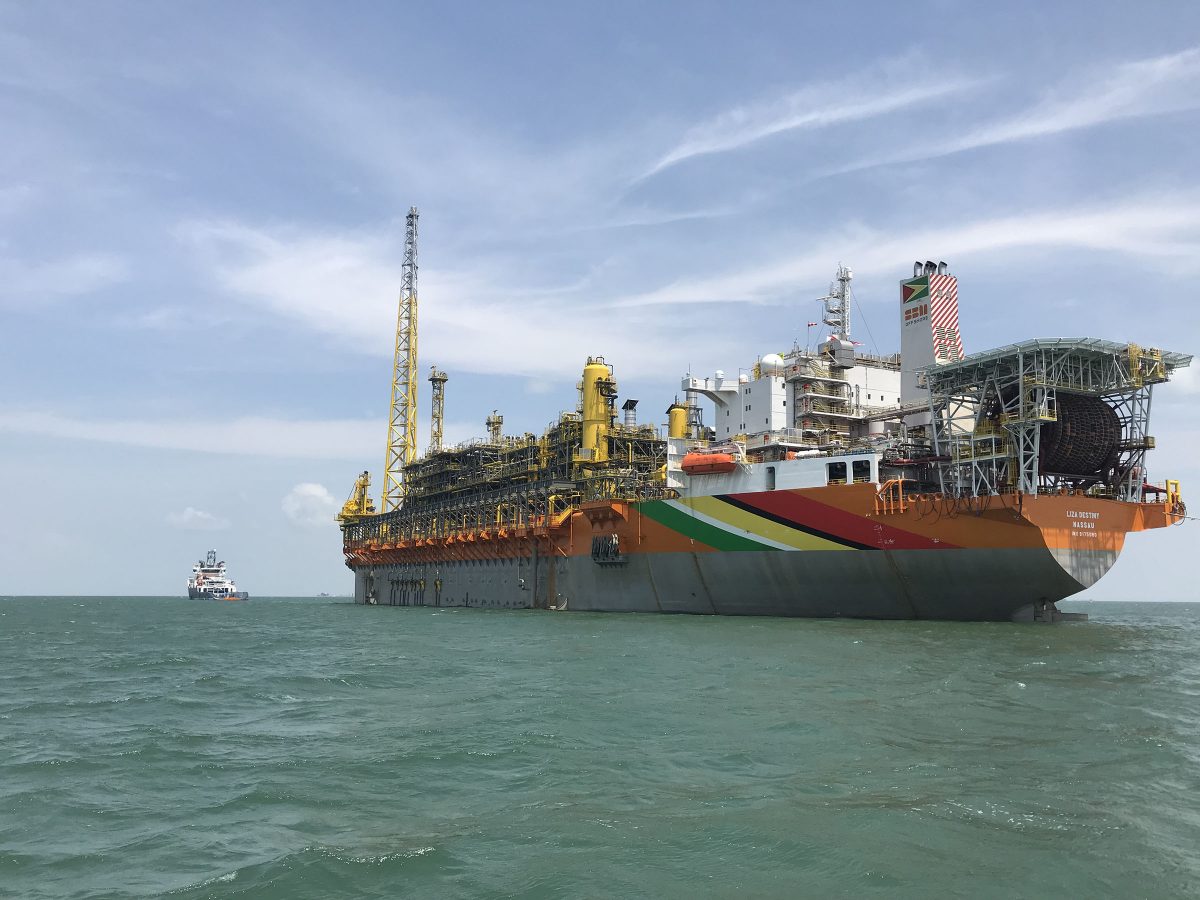First oil production from ExxonMobil’s Liza-1 field offshore Guyana is still expected this month with the oil major, having completed hookup of the equipment, currently testing it.
“We have been on record saying that we are a bit ahead of schedule and there is the potential for first oil being in December. It is still December, it is not even the [middle] of December,” ExxonMobil’s Public and Government Affairs Advisor Janelle Persaud told reporters at the company’s Duke Street, Kingston office on Thursday.
“As you just saw, we have just finished the hookup [phase]…We are now in the commissioning phase which includes testing the equipment and ensuring everything is working smoothly,” she added.
“Potentially, yes,” was Persaud’s response when asked if lifting – taking of oil from the Floating Production, Storage and Offloading (FPSO) platform and transferring it to the transporting vessel – of the first oil cargo would be next month. The cargo is expected to be approximately 1 million barrels of oil.
Asked about the company taking the first cargoes of oil, Persaud indicated that it was the government of Guyana that made the request. The ExxonMobil spokeswoman said that there were some “concerns” raised and it was decided that the company and its partners would get the first three liftings.
“We have refineries and it is easier for us to absorb that entire system to do that and that is what is going to be happening,” she said.
Asked about who raised concerns and the decision on the lifting rotations, she said, “I am not sure. I think it is a request that came from the government; an agreement among the parties that we would take the first lift.”
Last month, Director of the Department of Energy (DoE) Dr Mark Bynoe, disclosed that ExxonMobil will take the first three cargoes of crude oil from the country’s huge offshore deposits and Guyana will receive the fourth shipment around March next year.
Earlier this week, Reuters reported that Exxon and its partner, Hess Corp, plan to export the first-ever shipments of crude oil from Guyana between January and February next year. Exxon is planning on shipping two 1-million-barrel cargoes of Liza crude in January, to be followed by similarly sized shipments from Hess and Guyana’s government in February, the report said. It added that Exxon plans to process the oil at its refineries, while Hess could offer it for spot sales. The third partner in the venture, CNOOC, which has not yet scheduled exports, would ship it to China, whose refiners like using similar medium sweet grades, Reuters reported.
Explaining why a decision was taken to allow ExxonMobil to receive the first cargoes of crude, Bynoe had last month said, “ExxonMobil is not only a lifter, they are not only the operator, but they also have refineries. My understanding is the first lift often comes with a fair amount of impurities. Impurities in your crude can affect the price that you get for that crude, which would not only impact that batch but it could impact subsequent batches.”
He added, “So it would make sense for Exxon to take that first lift, which it will then process within its refineries, so that the quality of the crude or the integrity of the crude can be preserved going forward.”
One industry expert said that such a position is logical and would in the long run save this country “lots of dollars” as buyers would use the first lift as a gauge for biddings on future shipments.
However, some observers have questioned government’s stance, saying that it would have been symbolic for Guyana to get the first shipment.
Notwithstanding, Reuters reported that Liza will be the first Guyanese crude grade produced and offered to the oil market and the first buyers would test it and the price could potentially rise. The Liza crude has 32 API degrees of density and 0.5 per cent of sulfur content, according to Exxon’s assay seen by Reuters. The report said that interested buyers are exploring options to co-load Liza crude with other South American crudes bound for Asia, mainly Brazilian grades. Starting in March, very large crude carriers could lift up to two million barrels each, depending on weather conditions, according to Reuters.
“We are expecting Liza to be traded at $4-$6 over Brent crude prices during the first three months of exports. First buyers would test it, and then prices could go up a little,” a trader interested in purchases told Reuters.
As it relates to Guyana’s first oil cargo, Bynoe had said that selling the country’s share of oil will be done through advice from the marketing firm the government hires. Crude Marketing Specialist Virginia Markouizou of the United Kingdom-based RPS Group has been hired for the procuring of a marketing firm while Commercial Specialist Juan Lopez-Raggi will assist the DoE.
According to RPS’ website, it was founded in 1970 “by a passionate team of academics in Oxfordshire” who shared a dream of “creating an environmental planning practice dedicated to making the world a better place.”









